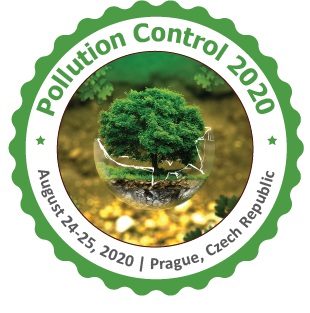
Radhika Bansal
Jaypee Institute of Information Technology, India
Title: Synergistic effect of Pediococcus pentosaceus with Vigna radiata and Vigna aconitiifolia as a natural system for Cr(VI) phytoremediation
Biography
Biography: Radhika Bansal
Abstract
Amongst the noxious pollutants perceiving in the environment, hexavalent chromium is of environmental and public health concerns. The use of microbes to change the concentration of Cr(VI) in soil and improve the ability of plants to deal with elevated metal concentrations has significant economic and ecological benefits. In the present study, Cr(VI) tolerant microbe Pediococcus pentocaseus was isolated from a waste water site. Hexavalent chromium reduction potential of the same at 600 mg kg-1 was found to be 87.42%. P. pentosaceus in combination with Vigna radiata and Vigna aconitifolia was assessed for enhancing the remediation of Cr(VI). Chromium toxicity in both the plants was found to be less after the addition of microbe in media where percentage decrease in root and shoot lengths was less as compared to that of plants alone in stress. Total chlorophyll content, in general, gradually decreased with increase in chromium concentration as compared to its control from 15.95 mg ml-1 & 15.77 mg ml-1 in control to 4.18 mg ml-1 & 3.87 mg ml-1 at 800 mg kg-1 concentration in V.radiata & V.aconitifolia respectively. Not much variation in chlorophyll content was found upon adding the inoculum. Catalase activity was found to increase with increasing heavy metal concentration with maximum activity; 52 Umin-1g-1 & 62.53 Umin-1g-1 observed at 400 ppm and 600 ppm for V.radiata & V.aconitifolia respectively and 52.43 Umin-1g-1 & 52.91 Umin-1g-1 in V.radiata with inoculum and V. aconitifolia with inoculum @400 ppm respectively. Addition of P. pentocaseus had a significant impact on translocation and bioconcentration factors where TF of 2.4, 2.1 & 2.4 was found in V. aconitifolia at 200, 400 & 800 mg kg-1. Higher remediation percentage i.e. 81.19% & 85.07% was observed at 800 mg kg-1 after the addition of P. pentosaceus. The finding suggest that P. pentosaceus’s potency to reduce Cr(VI) could aid in bioremediation. Moreover, V. radiata and V. aconitifolia could constitute to be a better natural system for phytoremediation of Cr (VI) that could ameliorate with P. pentosaceus inoculation. This strategy could be considered as a phytoremediation tool with great economic and ecological relevance.

